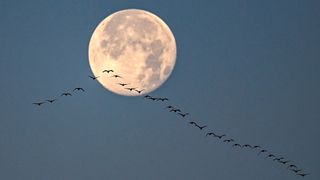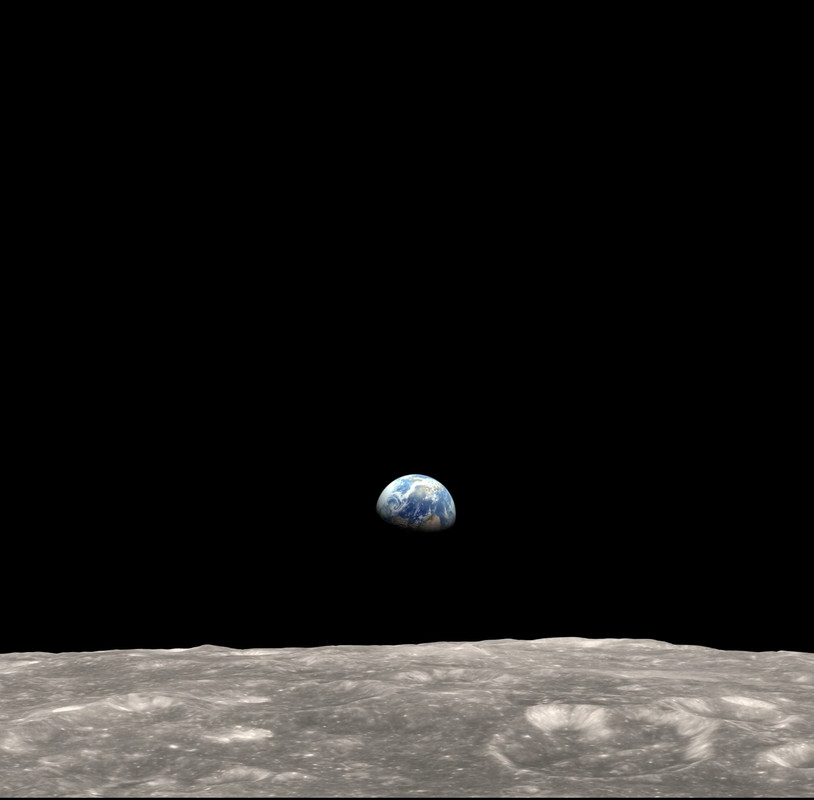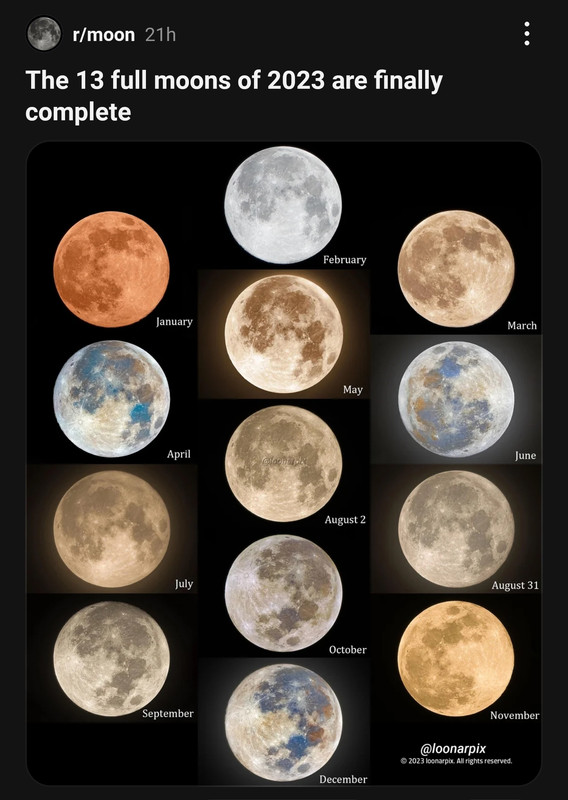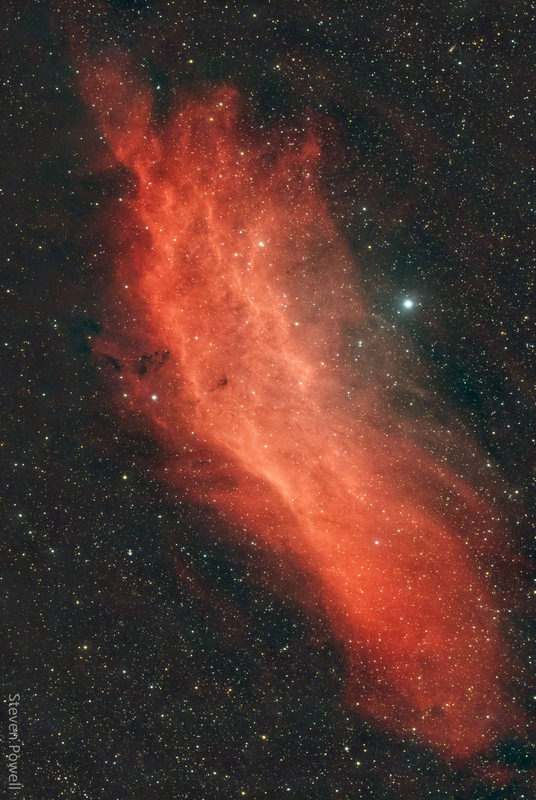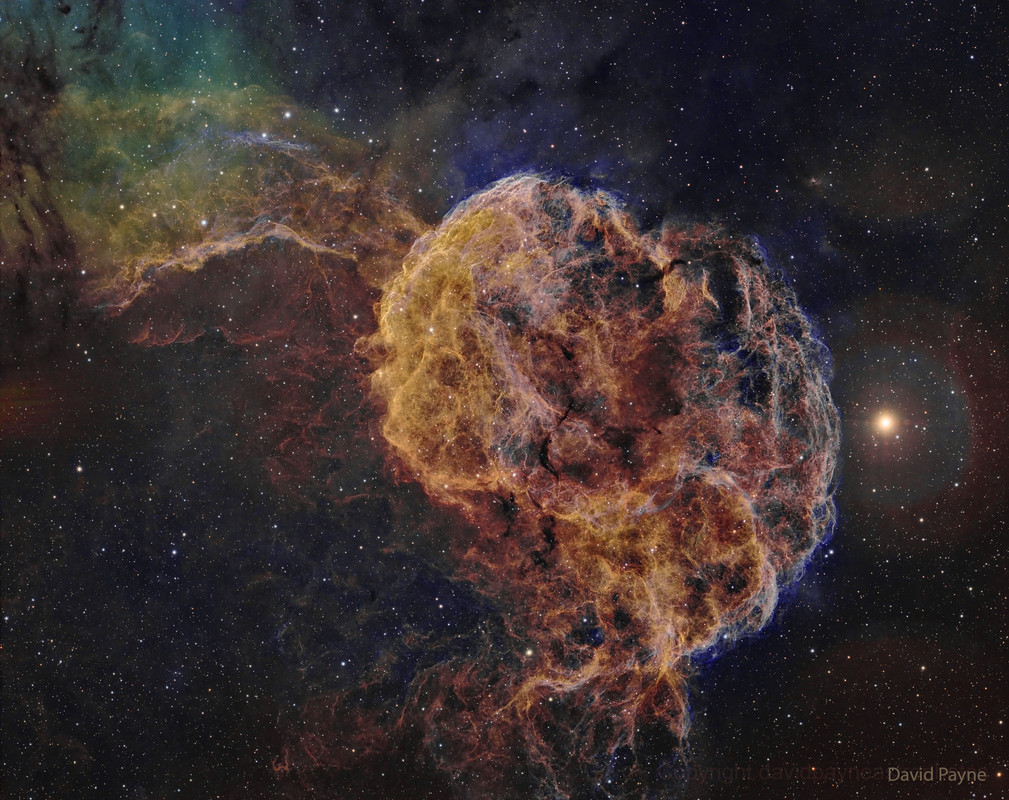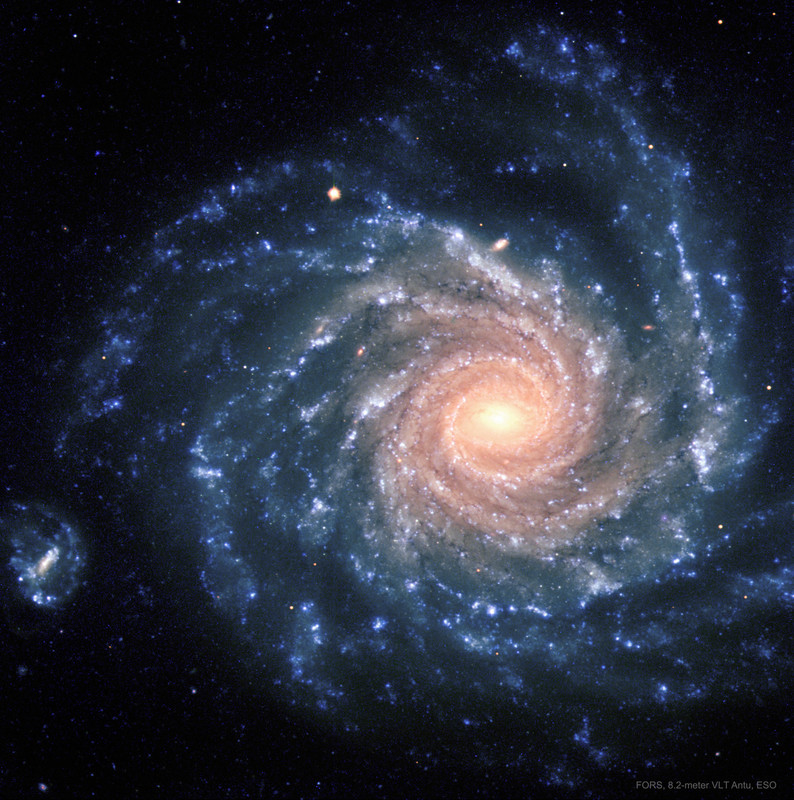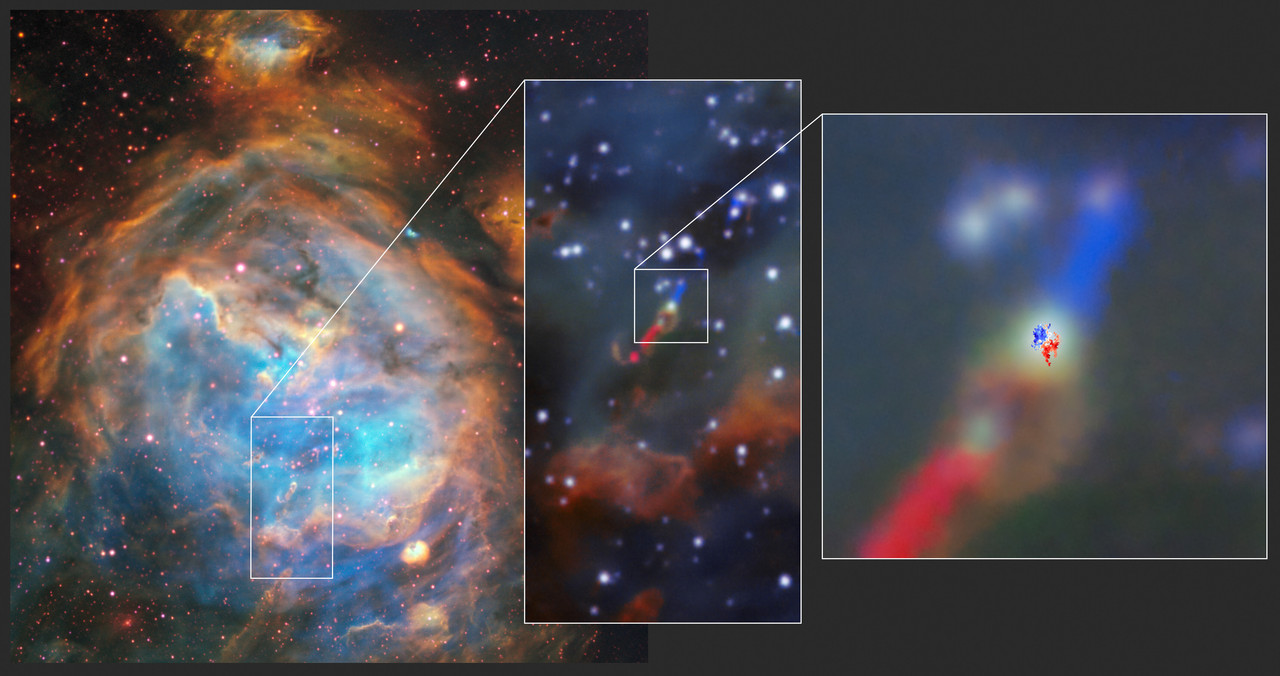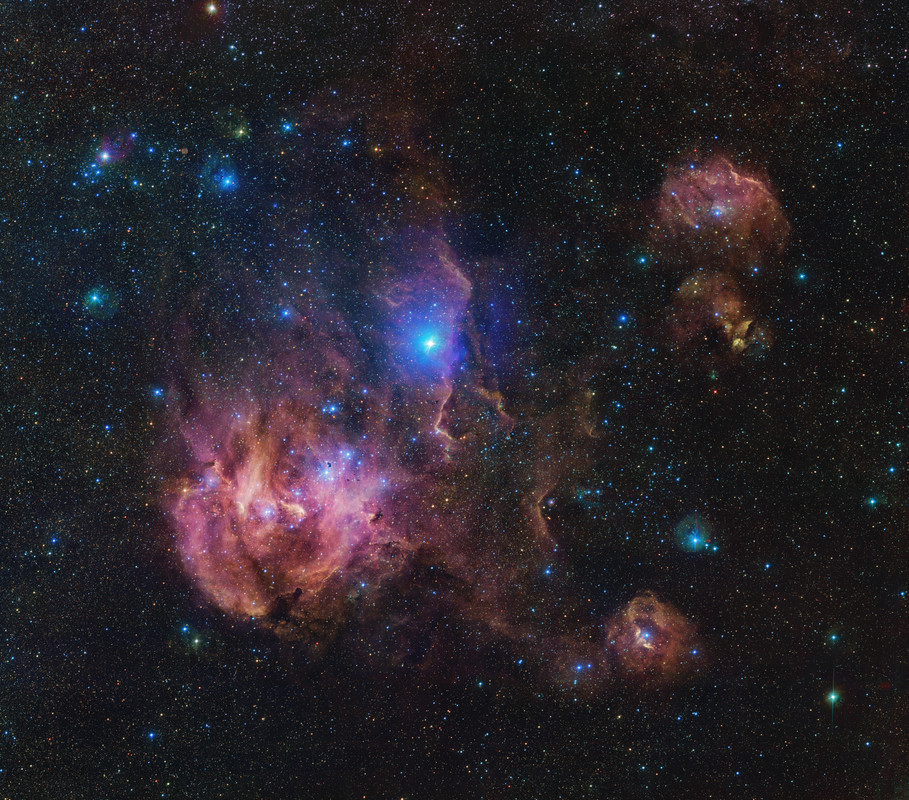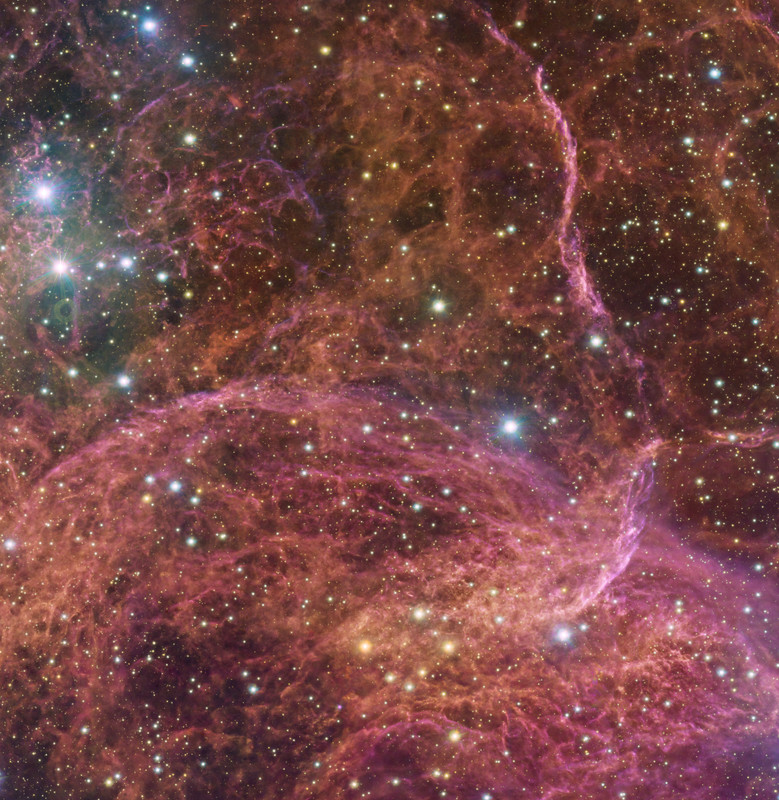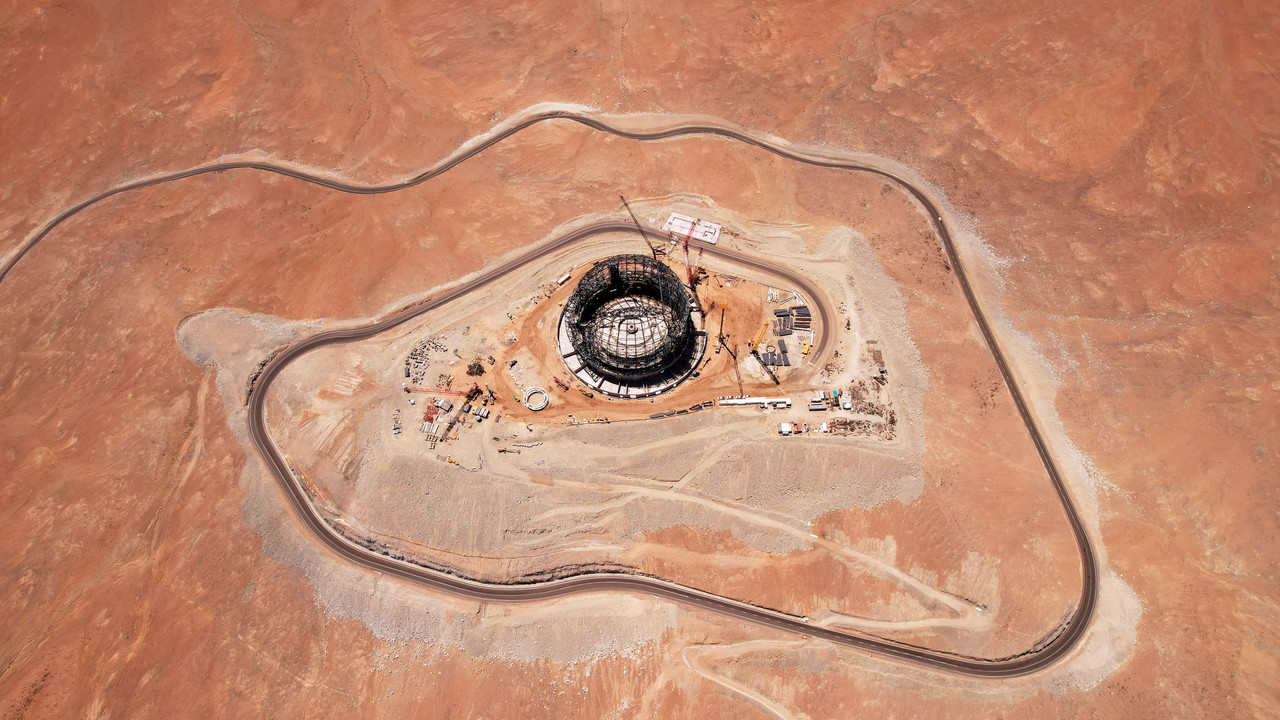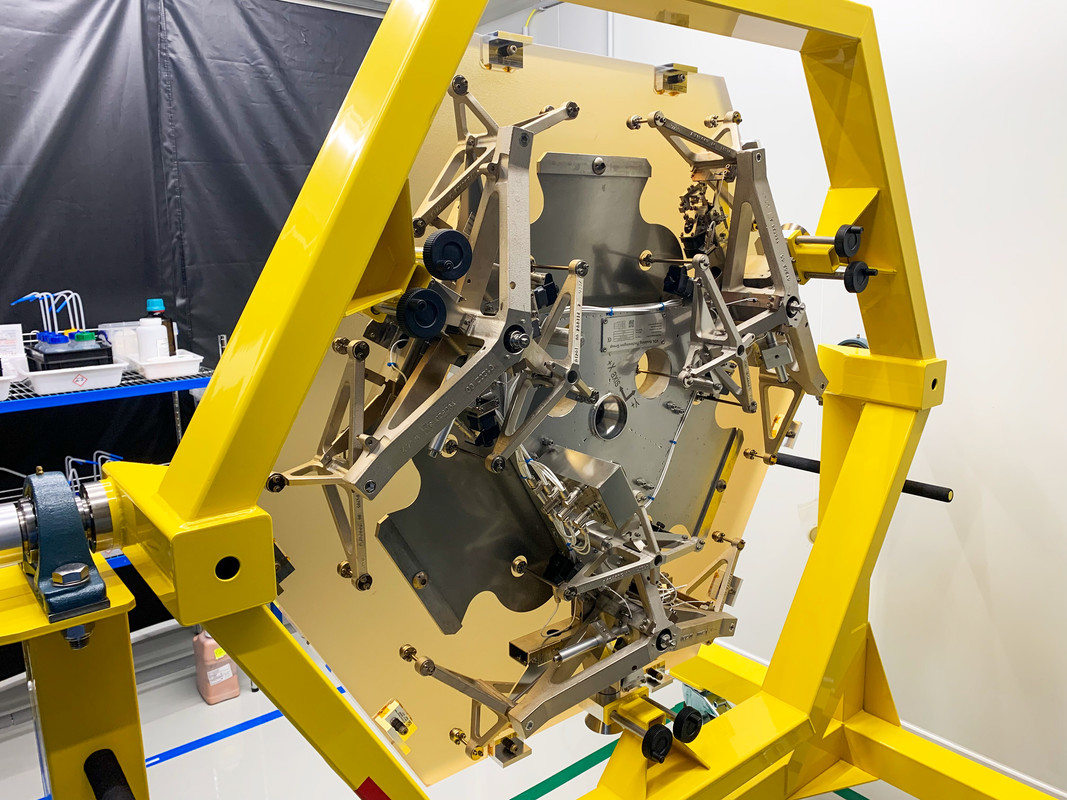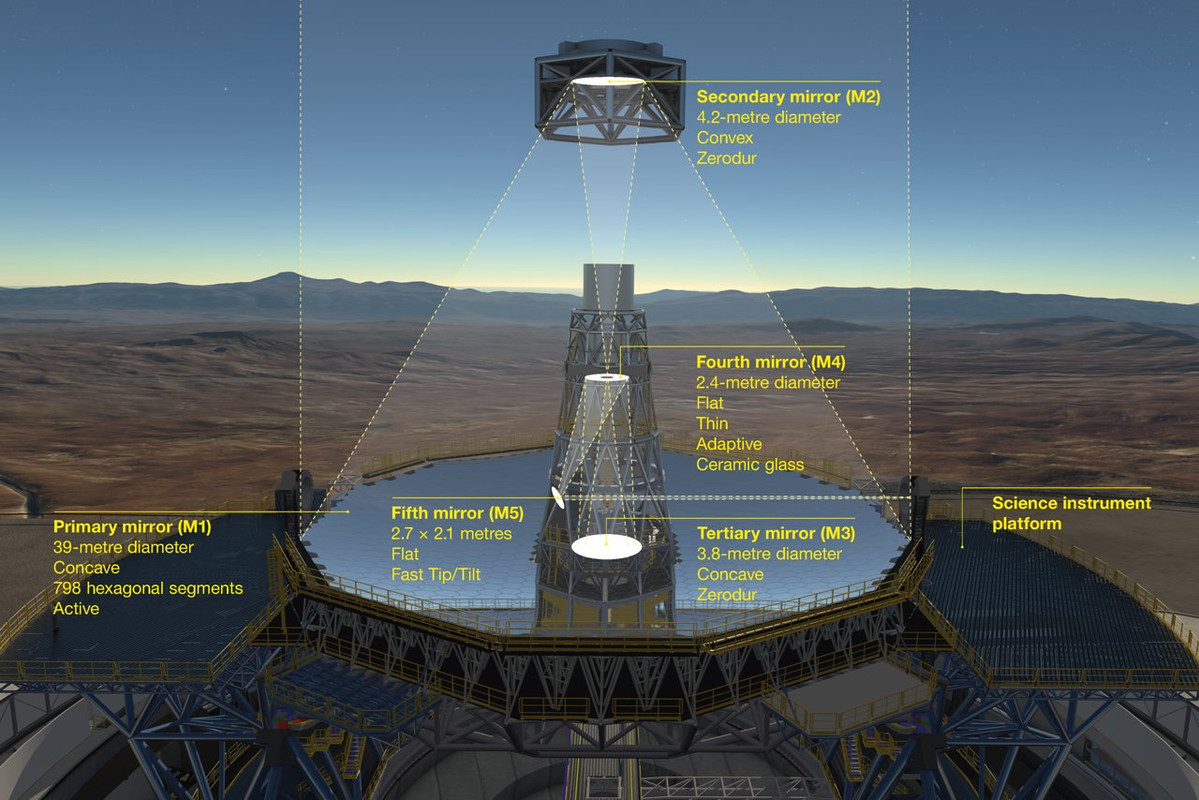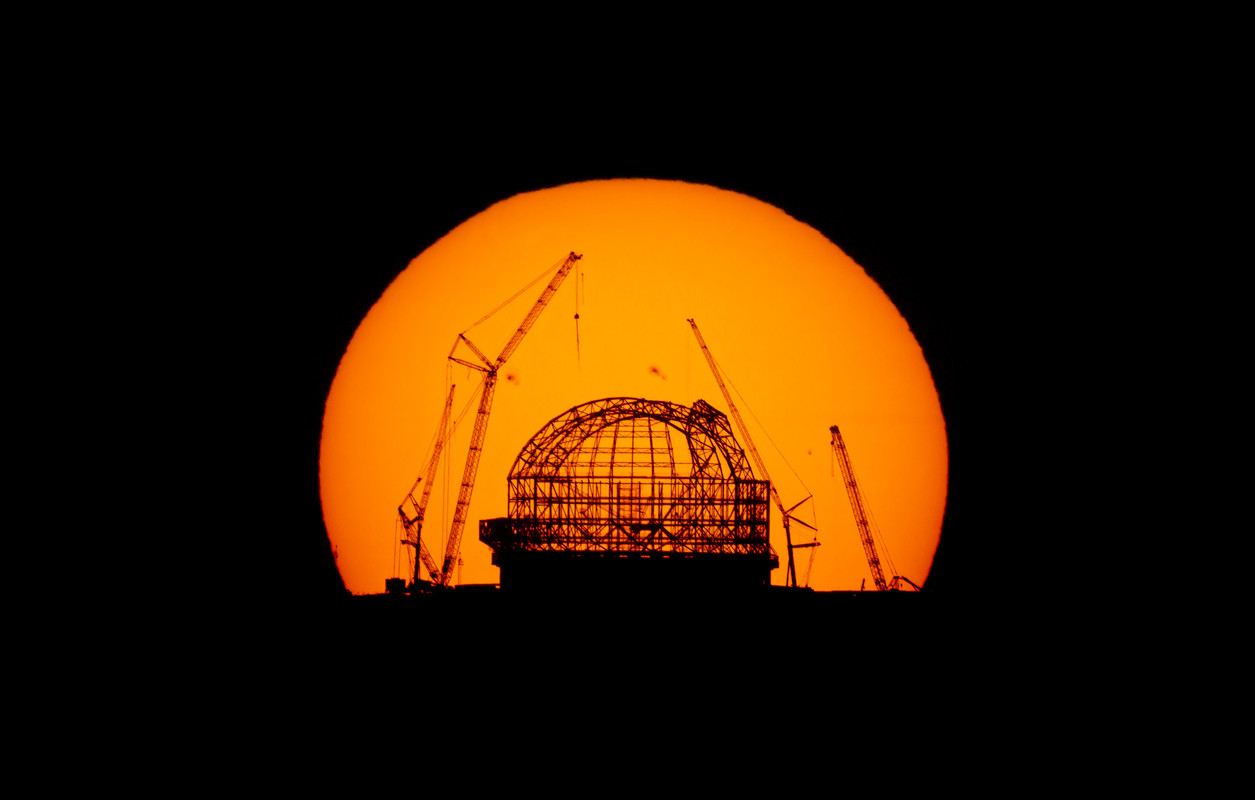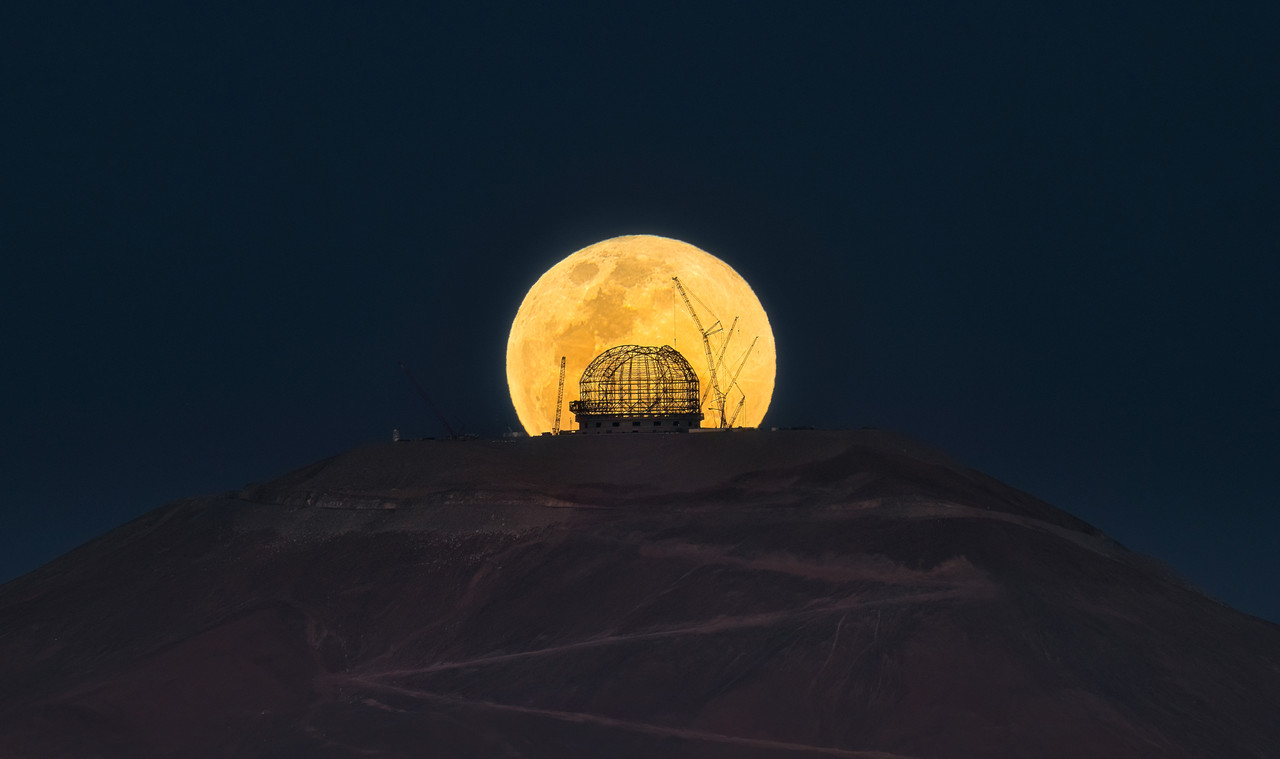CrazyDiamond
Spirit of the Dark Horse
What does the largest moon in the Solar System look like? Jupiter's moon Ganymede, larger than even Mercury and Pluto, has an icy surface speckled with bright young craters overlying a mixture of older, darker, more cratered terrain laced with grooves and ridges. The cause of the grooved terrain remains a topic of research, with a leading hypothesis relating it to shifting ice plates. Ganymede is thought to have an ocean layer that contains more water than Earth -- and might contain life. Like Earth's Moon, Ganymede keeps the same face towards its central planet, in this case Jupiter. The featured image was captured in 2021 by NASA's robotic Juno spacecraft when it passed by the immense moon. The close pass reduced Juno's orbital period around Jupiter from 53 days to 43 days. Juno continues to study the giant planet's high gravity, unusual magnetic field, and complex cloud structures.
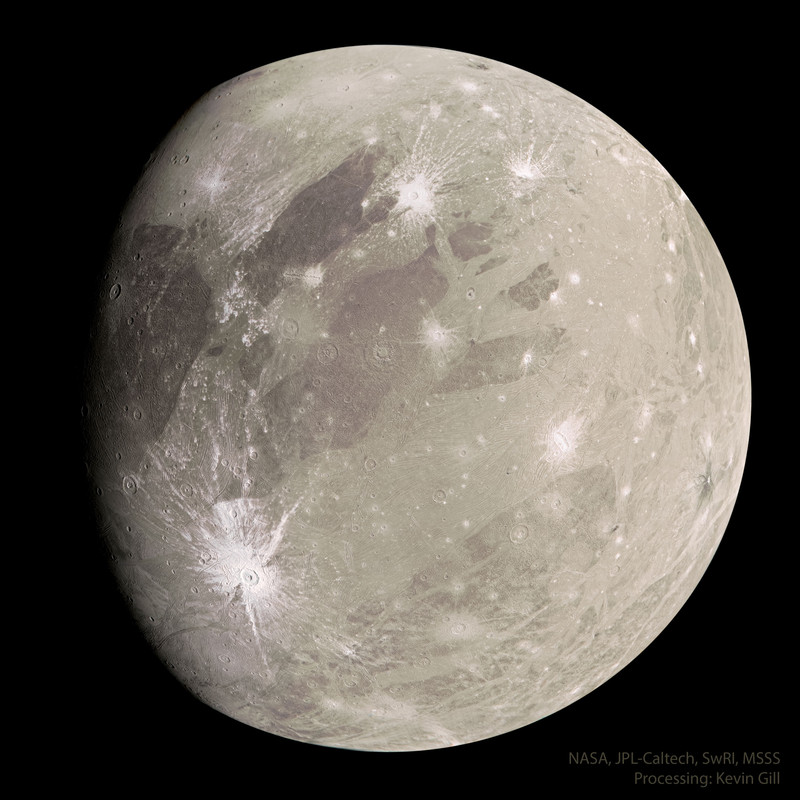
History's second known periodic comet is Comet Encke (2P/Encke). As it swings through the inner Solar System, Encke's orbit takes it from an aphelion, its greatest distance from the Sun, inside the orbit of Jupiter to a perihelion just inside the orbit of Mercury. Returning to its perihelion every 3.3 years, Encke has the shortest period of the Solar System's major comets. Comet Encke is also associated with (at least) two annual meteor showers on planet Earth, the North and South Taurids. Both showers are active in late October and early November. Their two separate radiants lie near bright star Aldebaran in the head-strong constellation Taurus. A faint comet, Encke was captured in this telescopic field of view imaged on the morning of August 24. Then, Encke's pretty greenish coma was close on the sky to the young, embedded star cluster and light-years long, tadpole-shaped star-forming clouds in emission nebula IC 410.

Gamma Cassiopeiae shines high in northern autumn evening skies. It's the brightest spiky star in this telescopic field of view toward the constellation Cassiopeia. Gamma Cas shares the ethereal-looking scene with ghostly interstellar clouds of gas and dust, IC 59 (top left) and IC 63. About 600 light-years distant, the clouds aren't actually ghosts. They are slowly disappearing though, eroding under the influence of energetic radiation from hot and luminous gamma Cas. Gamma Cas is physically located only 3 to 4 light-years from the nebulae. Slightly closer to gamma Cas, IC 63 is dominated by red H-alpha light emitted as hydrogen atoms ionized by the star's ultraviolet radiation recombine with electrons. Farther from the star, IC 59 shows proportionally less H-alpha emission but more of the characteristic blue tint of dust reflected star light. The cosmic stage spans over 1 degree or 10 light-years at the estimated distance of gamma Cas and friends.
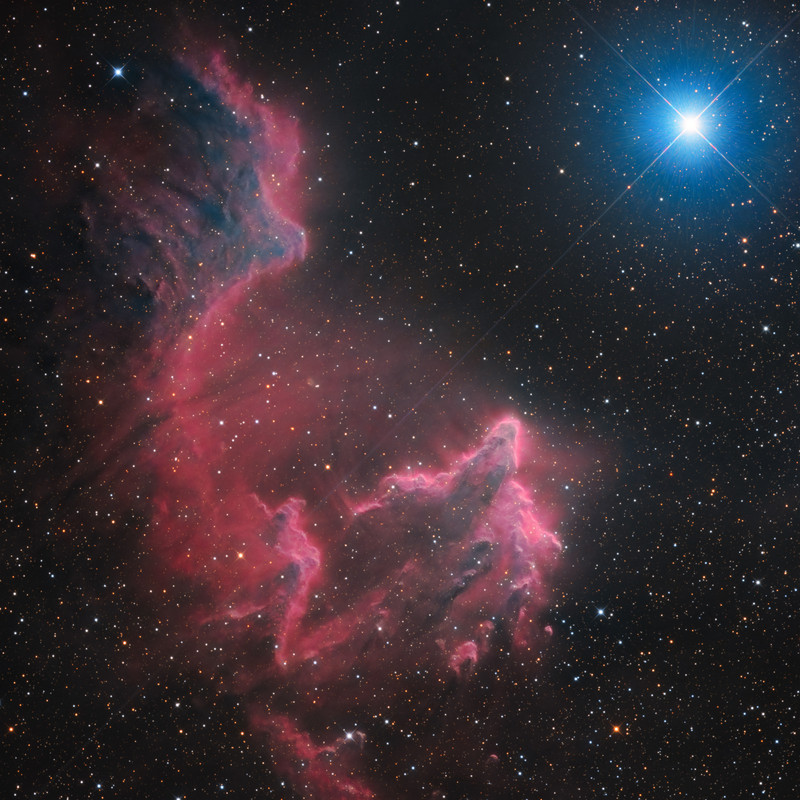
Named for the southern constellation toward which most of its galaxies can be found, the Fornax Cluster is one of the closest clusters of galaxies. About 62 million light-years away, it's over 20 times more distant than our neighboring Andromeda Galaxy, but only about 10 percent farther along than the better known and more populated Virgo Galaxy Cluster. Seen across this three degree wide field-of-view, almost every yellowish splotch on the image is an elliptical galaxy in the Fornax cluster. Elliptical galaxies NGC 1399 and NGC 1404 are the dominant, bright cluster members toward the bottom center. A standout, large barred spiral galaxy, NGC 1365, is visible on the upper right as a prominent Fornax cluster member.

Sculpted by stellar winds and radiation, a magnificent interstellar dust cloud by chance has assumed this recognizable shape. Fittingly named the Horsehead Nebula, it is some 1,500 light-years distant, embedded in the vast Orion cloud complex. About five light-years "tall," the dark cloud is cataloged as Barnard 33 and is visible only because its obscuring dust is silhouetted against the glowing red emission nebula IC 434. Stars are forming within the dark cloud. Contrasting blue reflection nebula NGC 2023, surrounding a hot, young star, is at the lower left of the full image. The featured gorgeous color image combines both narrowband and broadband images recorded using several different telescopes.
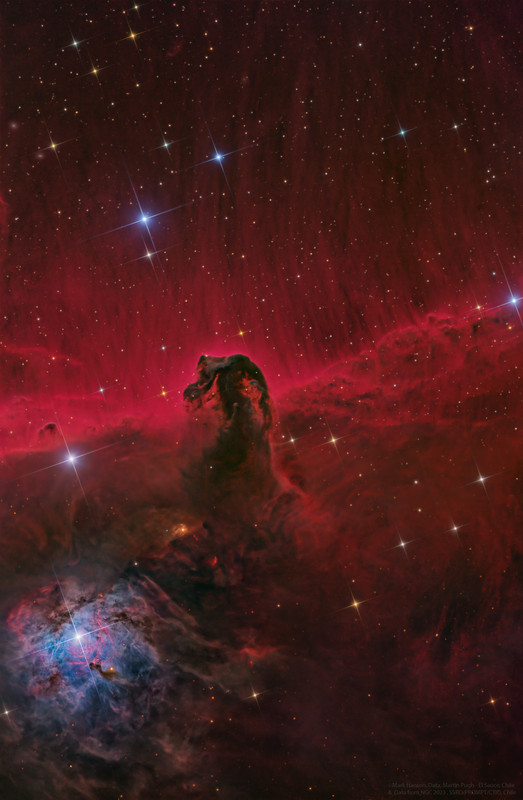
Especially for @NYC_Frank
These chaotic and tangled filaments of shocked, glowing gas are spread across planet Earth's sky toward the constellation of Cygnus as part of the Veil Nebula. The Veil Nebula itself is a large supernova remnant, an expanding cloud born of the death explosion of a massive star. Light from the original supernova explosion likely reached Earth over 5,000 years ago. The glowing filaments are really more like long ripples in a sheet seen almost edge on, remarkably well separated into the glow of ionized hydrogen atoms shown in red and oxygen in blue hues. Also known as the Cygnus Loop and cataloged as NGC 6979, the Veil Nebula now spans about 6 times the diameter of the full Moon. The length of the wisp corresponds to about 30 light years, given its estimated distance of 2,400 light years. Often identified as Pickering's Triangle for a director of Harvard College Observatory, it is perhaps better named for its discoverer, astronomer Williamina Fleming, as Fleming's Triangular Wisp.
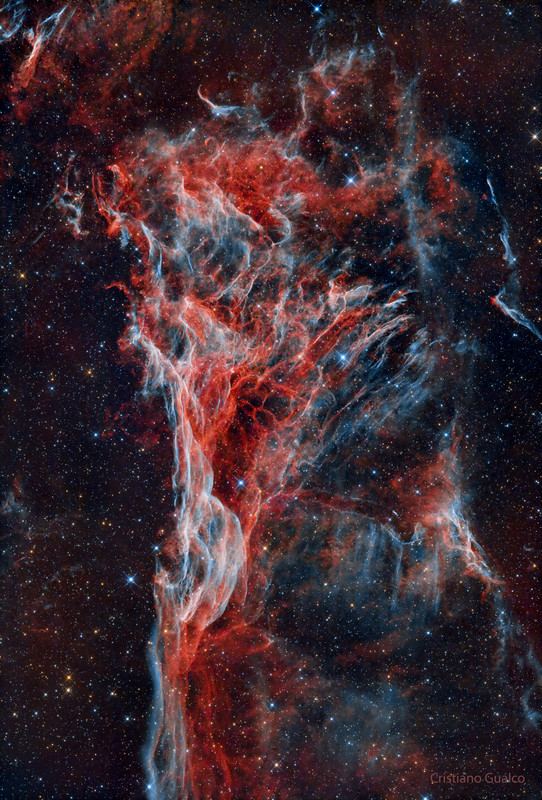
The cosmic brush of star formation composed this interstellar canvas of emission, dust, and dark nebulae. A 5 degree wide telescopic mosaic, it frames a region found north of bright star Aldebaran on the sky, at an inner wall of the local bubble along the Taurus molecular cloud. At lower left, emission cataloged as Sh2-239 shows signs of embedded young stellar objects. The region's Herbig-Haro objects, nebulosities associated with newly born stars, are marked by tell-tale reddish jets of shocked hydrogen gas. Above and right T Tauri, the prototype of the class of T Tauri variable stars, is next to a yellowish nebula historically known as Hind's Variable Nebula (NGC 1555). T Tauri stars are now generally recognized as young, less than a few million years old, sun-like stars still in the early stages of formation.

This eagle ray glides across a cosmic sea. Officially cataloged as SH2-63 and LBN 86, the dark nebula is composed of gas and dust that just happens to appear shaped like a common ocean fish. The interstellar dust nebula appears light brown as it blocks and reddens visible light emitted behind it. Dark nebulas glow primarily in infrared light, but also reflect visible light from surrounding stars. The dust in dark nebulas is usually sub-millimeter chunks of carbon, silicon, and oxygen, frequently coated with frozen carbon monoxide and nitrogen. Dark nebulas are also known as molecular clouds because they also contain relatively high amounts of molecular hydrogen and larger molecules. Previously unnamed, the here dubbed Eagle Ray Nebula is normally quite dim but has been imaged clearly over 20-hours through dark skies in Chile.
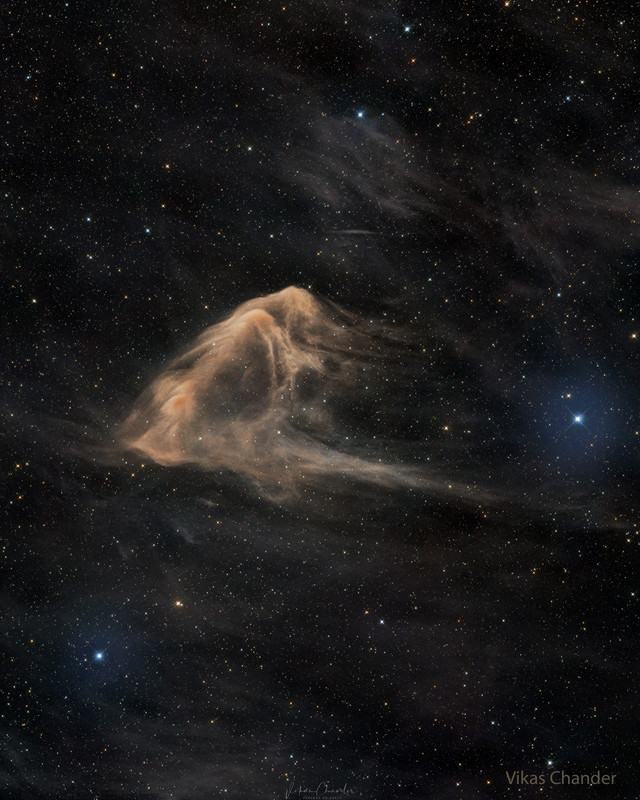
What excites the Heart Nebula? First, the large emission nebula on the left, catalogued as IC 1805, looks somewhat like a human heart. The nebula glows brightly in red light emitted by its most prominent element, hydrogen, but this long-exposure image was also blended with light emitted by silicon (yellow) and oxygen (blue). In the center of the Heart Nebula are young stars from the open star cluster Melotte 15 that are eroding away several picturesque dust pillars with their atom-exciting energetic light and winds. The Heart Nebula is located about 7,500 light years away toward the constellation of Cassiopeia. At the bottom right of the Heart Nebula is the companion Fishhead Nebula. This wide and deep image clearly shows, though, that glowing gas surrounds the Heart Nebula in all directions.
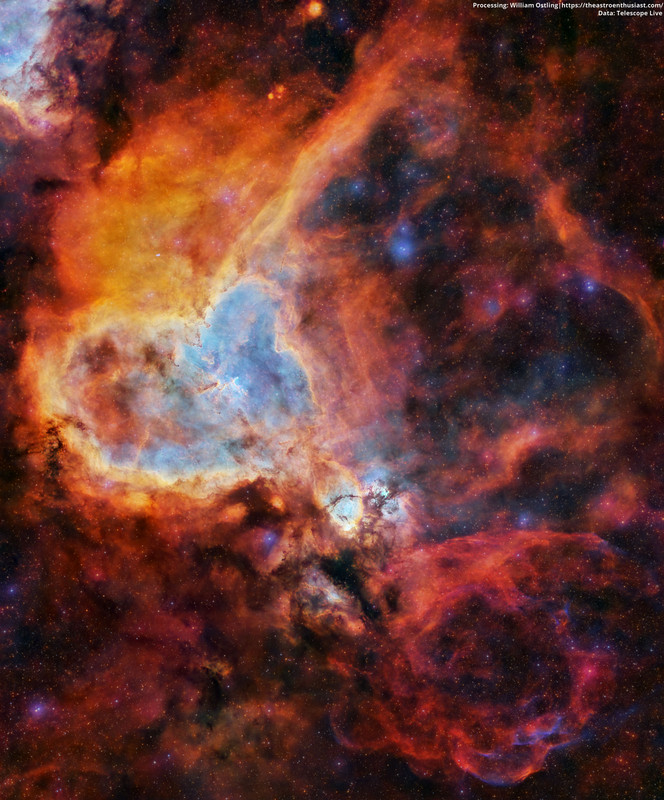

History's second known periodic comet is Comet Encke (2P/Encke). As it swings through the inner Solar System, Encke's orbit takes it from an aphelion, its greatest distance from the Sun, inside the orbit of Jupiter to a perihelion just inside the orbit of Mercury. Returning to its perihelion every 3.3 years, Encke has the shortest period of the Solar System's major comets. Comet Encke is also associated with (at least) two annual meteor showers on planet Earth, the North and South Taurids. Both showers are active in late October and early November. Their two separate radiants lie near bright star Aldebaran in the head-strong constellation Taurus. A faint comet, Encke was captured in this telescopic field of view imaged on the morning of August 24. Then, Encke's pretty greenish coma was close on the sky to the young, embedded star cluster and light-years long, tadpole-shaped star-forming clouds in emission nebula IC 410.

Gamma Cassiopeiae shines high in northern autumn evening skies. It's the brightest spiky star in this telescopic field of view toward the constellation Cassiopeia. Gamma Cas shares the ethereal-looking scene with ghostly interstellar clouds of gas and dust, IC 59 (top left) and IC 63. About 600 light-years distant, the clouds aren't actually ghosts. They are slowly disappearing though, eroding under the influence of energetic radiation from hot and luminous gamma Cas. Gamma Cas is physically located only 3 to 4 light-years from the nebulae. Slightly closer to gamma Cas, IC 63 is dominated by red H-alpha light emitted as hydrogen atoms ionized by the star's ultraviolet radiation recombine with electrons. Farther from the star, IC 59 shows proportionally less H-alpha emission but more of the characteristic blue tint of dust reflected star light. The cosmic stage spans over 1 degree or 10 light-years at the estimated distance of gamma Cas and friends.

Named for the southern constellation toward which most of its galaxies can be found, the Fornax Cluster is one of the closest clusters of galaxies. About 62 million light-years away, it's over 20 times more distant than our neighboring Andromeda Galaxy, but only about 10 percent farther along than the better known and more populated Virgo Galaxy Cluster. Seen across this three degree wide field-of-view, almost every yellowish splotch on the image is an elliptical galaxy in the Fornax cluster. Elliptical galaxies NGC 1399 and NGC 1404 are the dominant, bright cluster members toward the bottom center. A standout, large barred spiral galaxy, NGC 1365, is visible on the upper right as a prominent Fornax cluster member.

Sculpted by stellar winds and radiation, a magnificent interstellar dust cloud by chance has assumed this recognizable shape. Fittingly named the Horsehead Nebula, it is some 1,500 light-years distant, embedded in the vast Orion cloud complex. About five light-years "tall," the dark cloud is cataloged as Barnard 33 and is visible only because its obscuring dust is silhouetted against the glowing red emission nebula IC 434. Stars are forming within the dark cloud. Contrasting blue reflection nebula NGC 2023, surrounding a hot, young star, is at the lower left of the full image. The featured gorgeous color image combines both narrowband and broadband images recorded using several different telescopes.

Especially for @NYC_Frank
These chaotic and tangled filaments of shocked, glowing gas are spread across planet Earth's sky toward the constellation of Cygnus as part of the Veil Nebula. The Veil Nebula itself is a large supernova remnant, an expanding cloud born of the death explosion of a massive star. Light from the original supernova explosion likely reached Earth over 5,000 years ago. The glowing filaments are really more like long ripples in a sheet seen almost edge on, remarkably well separated into the glow of ionized hydrogen atoms shown in red and oxygen in blue hues. Also known as the Cygnus Loop and cataloged as NGC 6979, the Veil Nebula now spans about 6 times the diameter of the full Moon. The length of the wisp corresponds to about 30 light years, given its estimated distance of 2,400 light years. Often identified as Pickering's Triangle for a director of Harvard College Observatory, it is perhaps better named for its discoverer, astronomer Williamina Fleming, as Fleming's Triangular Wisp.

The cosmic brush of star formation composed this interstellar canvas of emission, dust, and dark nebulae. A 5 degree wide telescopic mosaic, it frames a region found north of bright star Aldebaran on the sky, at an inner wall of the local bubble along the Taurus molecular cloud. At lower left, emission cataloged as Sh2-239 shows signs of embedded young stellar objects. The region's Herbig-Haro objects, nebulosities associated with newly born stars, are marked by tell-tale reddish jets of shocked hydrogen gas. Above and right T Tauri, the prototype of the class of T Tauri variable stars, is next to a yellowish nebula historically known as Hind's Variable Nebula (NGC 1555). T Tauri stars are now generally recognized as young, less than a few million years old, sun-like stars still in the early stages of formation.

This eagle ray glides across a cosmic sea. Officially cataloged as SH2-63 and LBN 86, the dark nebula is composed of gas and dust that just happens to appear shaped like a common ocean fish. The interstellar dust nebula appears light brown as it blocks and reddens visible light emitted behind it. Dark nebulas glow primarily in infrared light, but also reflect visible light from surrounding stars. The dust in dark nebulas is usually sub-millimeter chunks of carbon, silicon, and oxygen, frequently coated with frozen carbon monoxide and nitrogen. Dark nebulas are also known as molecular clouds because they also contain relatively high amounts of molecular hydrogen and larger molecules. Previously unnamed, the here dubbed Eagle Ray Nebula is normally quite dim but has been imaged clearly over 20-hours through dark skies in Chile.

What excites the Heart Nebula? First, the large emission nebula on the left, catalogued as IC 1805, looks somewhat like a human heart. The nebula glows brightly in red light emitted by its most prominent element, hydrogen, but this long-exposure image was also blended with light emitted by silicon (yellow) and oxygen (blue). In the center of the Heart Nebula are young stars from the open star cluster Melotte 15 that are eroding away several picturesque dust pillars with their atom-exciting energetic light and winds. The Heart Nebula is located about 7,500 light years away toward the constellation of Cassiopeia. At the bottom right of the Heart Nebula is the companion Fishhead Nebula. This wide and deep image clearly shows, though, that glowing gas surrounds the Heart Nebula in all directions.



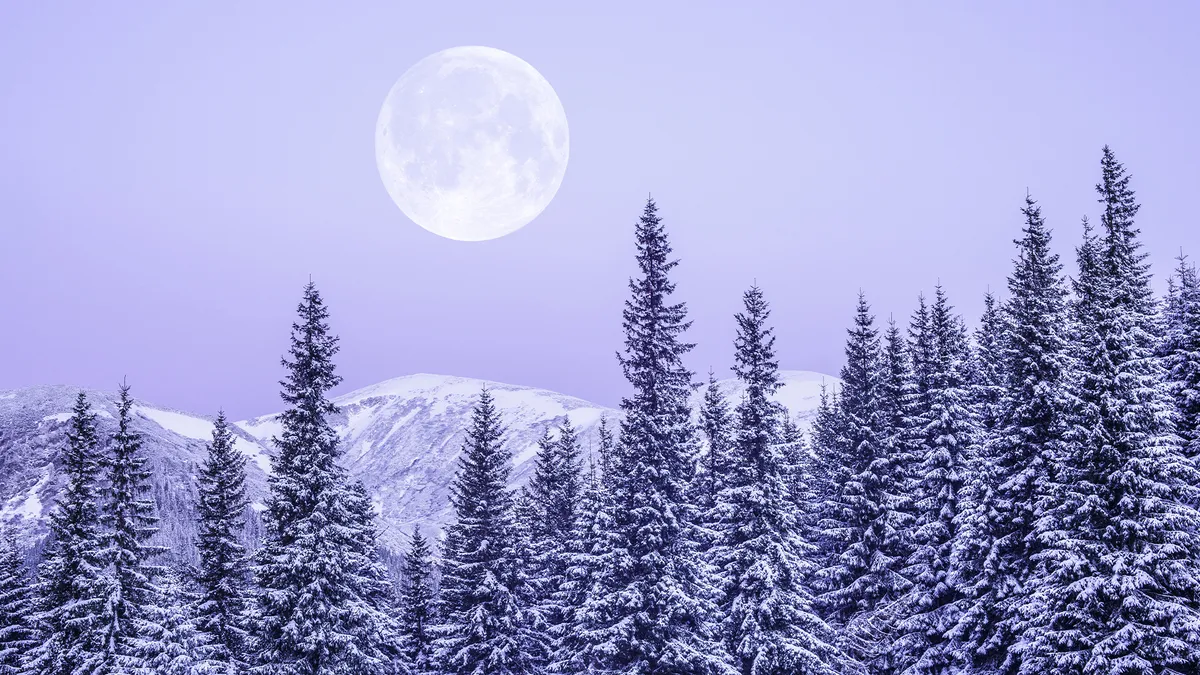
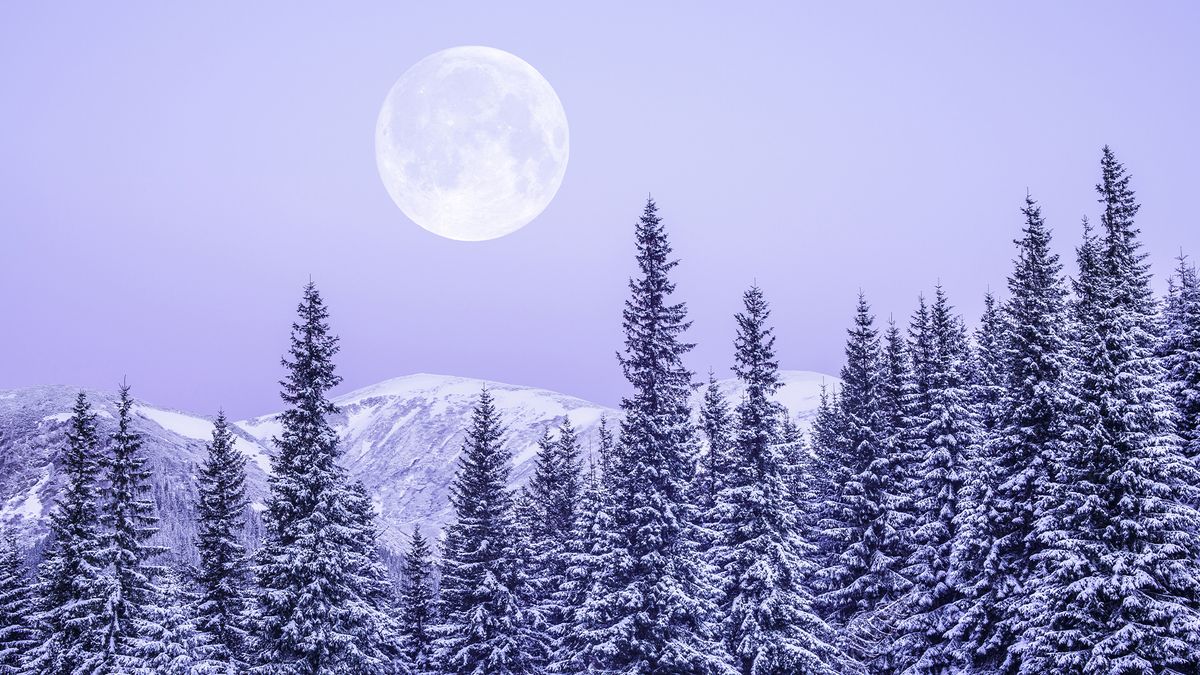

 :
:




